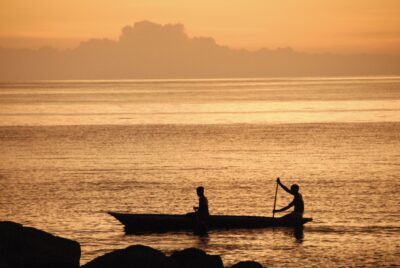by Dwight Furrow
 One longstanding debate in aesthetics concerns the relative virtues of formalism vs. contextualism. This debate, which preoccupied art theorists in the 20th Century, now rages in the culinary world of the 21st Century. Roughly, the controversy is about whether a work of art is best appreciated by attending to its sensory properties and their organization or should we focus on its meaning and the social, historical, or psychological context of its production. The debate is similar in the world of cuisine. How best should we appreciate the food or beverages we consume? Should we focus solely on the flavors and aromas or does authenticity and social context matter?
One longstanding debate in aesthetics concerns the relative virtues of formalism vs. contextualism. This debate, which preoccupied art theorists in the 20th Century, now rages in the culinary world of the 21st Century. Roughly, the controversy is about whether a work of art is best appreciated by attending to its sensory properties and their organization or should we focus on its meaning and the social, historical, or psychological context of its production. The debate is similar in the world of cuisine. How best should we appreciate the food or beverages we consume? Should we focus solely on the flavors and aromas or does authenticity and social context matter?
Formalists argue that works of art are fundamentally vehicles for sensory experience. In painting, the arrangement of lines, shapes, and colors are the primary source of aesthetic pleasure. In music it is harmonic structure, timbre, and the arrangement of musical themes and variations that matters. Narrative, depiction, meaning, and historical context may be interesting but are superfluous to genuine aesthetic value and tend to distract us from the sensory properties which constitute the essence of a work, so claim the formalists.
Diners, chefs, and critics who think that flavor is primary and questions about the origins of food and its authenticity are secondary seem to be channeling the formalist argument.
By contrast, contextualism places great emphasis on the fact that a work is created and appreciated at a particular time and place and by particular individuals. Facts about the social and historical context of a work are essential to it, not merely contingent features. According to contextualists, works lack clear meanings and determinate aesthetic properties when the conditions under which they are created and experienced are not the focal point of attention.
The discourse around food appreciation has taken a decidedly contextualist turn. Read more »

 Historians often ask what led to Trump’s landslide victory back in 2024. All those guilty verdicts in the “PornHush” trial certainly helped — the final proof, for many, that the President was an innocent lamb set upon by crooks. And the November exit polls showed that millions of patriotic Americans found democracy a chore anyway, or were actively Fascism-curious, or simply got a buzz out of the fact that, being disempowered in every other meaningful way, they could at least step up and play a part in destroying their own children’s future. But surely the decisive factor was Trump’s inspired choice of running mate — philosopher and controversialist Thomas Hobbes.
Historians often ask what led to Trump’s landslide victory back in 2024. All those guilty verdicts in the “PornHush” trial certainly helped — the final proof, for many, that the President was an innocent lamb set upon by crooks. And the November exit polls showed that millions of patriotic Americans found democracy a chore anyway, or were actively Fascism-curious, or simply got a buzz out of the fact that, being disempowered in every other meaningful way, they could at least step up and play a part in destroying their own children’s future. But surely the decisive factor was Trump’s inspired choice of running mate — philosopher and controversialist Thomas Hobbes. 

 Vivian Maier. October 29, 1953, NY, NY.
Vivian Maier. October 29, 1953, NY, NY.



 Malawi, Zimbabwe and Mozambique almost never get good press. The modest coverage of last year’s
Malawi, Zimbabwe and Mozambique almost never get good press. The modest coverage of last year’s 



 Latifa Echakhch. Taqsim, 2017.
Latifa Echakhch. Taqsim, 2017.
